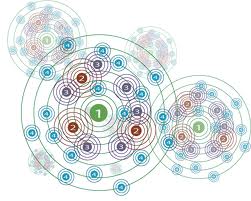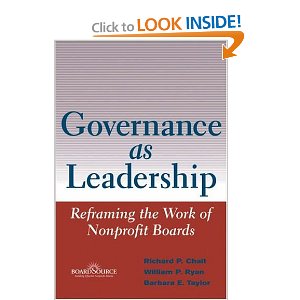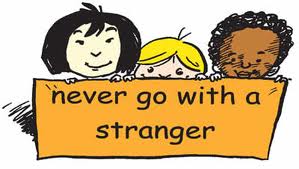 Welcome to O.D. Fridays at DonorDreams blog. Every Friday for the foreseeable future we will be looking more closely at a recent post from John Greco’s blog called “johnponders ~ about life at work, mostly” and applying his organizational development messages to the non-profit community.
Welcome to O.D. Fridays at DonorDreams blog. Every Friday for the foreseeable future we will be looking more closely at a recent post from John Greco’s blog called “johnponders ~ about life at work, mostly” and applying his organizational development messages to the non-profit community.
In a recent post, John talked said,”The practice of wei wu wei — action without action — is a fundamental tenet in Chinese thought, mostly emphasized by the Taoist school.” He talked about this organic approach to decision-making in a very personal way, but I couldn’t help extrapolating it to an organizational level and some of non-profit experiences.
If I had a nickel for every time I walked through an organization’s front door and saw everyone practicing wei wu wei, I would be a very rich man. Here are a few examples:
- The agency’s revenue budget is overly dependent on one source of funding (e.g. government dollars), but no one is proactively doing anything to diversify their revenue streams.
- The board volunteer in charge of the annual dinner is waiting for their fellow board volunteers to report back on the status of phone calls to prospective event sponsors, but everyone is procrastinating until the last-minute and looking around to see what others are doing.
- The executive director is sitting around waiting for board members to engage in fundraising activities, but board volunteers are looking at their executive director and/or fellow board members to do something (e.g. lead, engage, communicate urgency, provide accountability, etc).
I love it when John’s blog posts jolt me from my desk chair and cause me to pace around my home office, which is exactly what this one did.
I am a proactive kind of guy. I have a BA and Masters degree in Planning from the University of Illinois Urbana-Champaign. Every fiber of my being leads me to plan and push forward. So, sitting still and doing nothing is antithetical to who I am.
 Moreover, whenever I see non-profit organizations and both staff and board leaders practicing this Taoist approach of “sitting still” and waiting for things to happen, I’ve often observed a train wreck shortly thereafter. However, I know that there are times when John is 100% right and this approach is warranted.
Moreover, whenever I see non-profit organizations and both staff and board leaders practicing this Taoist approach of “sitting still” and waiting for things to happen, I’ve often observed a train wreck shortly thereafter. However, I know that there are times when John is 100% right and this approach is warranted.
The wise non-profit leader knows when to plan, push forward and engage versus sit still and wait for the right situation to develop and change to occur.
Are you one of those wise non-profit leaders? If so, please use the comment box below to share an example of when taking a wait-n-see approach worked for you. Is it intuition that you use to know when to use an organic versus planned approach?
Oh Obi-Wan Kenobi . . . please help me understand the ways of the non-profit force.
Here’s to your health!
Erik Anderson
Founder & President, The Healthy Non-Profit LLC
www.thehealthynonprofit.com
erik@thehealthynonprofit.com
http://twitter.com/#!/eanderson847
http://www.facebook.com/eanderson847
http://www.linkedin.com/in/erikanderson847

 I was recently engaged in an engaging discussion about board development with a great group of non-profit board volunteers. The range of topics in that conversation spanned issues such as prospect identification, evaluation methods, prioritizing prospect lists, cultivating prospects, recruitment process, orientation, recognition, and evaluation. It was one of those conversations that a facilitator loves because everyone was engaged and actively participating. There was an energetic dynamic in the room, and then someone asked a really tough question:
I was recently engaged in an engaging discussion about board development with a great group of non-profit board volunteers. The range of topics in that conversation spanned issues such as prospect identification, evaluation methods, prioritizing prospect lists, cultivating prospects, recruitment process, orientation, recognition, and evaluation. It was one of those conversations that a facilitator loves because everyone was engaged and actively participating. There was an energetic dynamic in the room, and then someone asked a really tough question: For decades (and probably centuries), board development committees have answered this question the old fashion way. They sat down around a table and talked it over. Those committees who were successful had a diversity of people sitting around the table and were able to assess a prospect’s social network in an anecdotal manner. They talked about what they see and hear about the prospect. Here are just some of the things they most likely talked through:
For decades (and probably centuries), board development committees have answered this question the old fashion way. They sat down around a table and talked it over. Those committees who were successful had a diversity of people sitting around the table and were able to assess a prospect’s social network in an anecdotal manner. They talked about what they see and hear about the prospect. Here are just some of the things they most likely talked through: However, there are some “21st Century” tools that your board development committee might want to start using when talking through the issue of a prospect’s network. Consider the following:
However, there are some “21st Century” tools that your board development committee might want to start using when talking through the issue of a prospect’s network. Consider the following:













